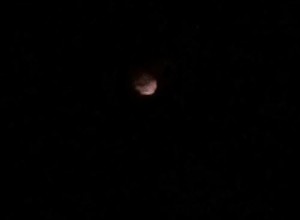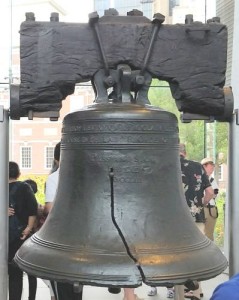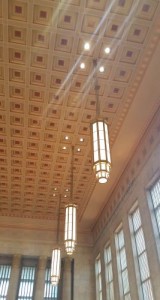Yukon: Canada’s Wild West by Tom Clynes, photographs by Paul Nicklen
In the 1800s, prospectors discovered gold in the Yukon, and a gold rush began. The government passed laws allowing people to stake claims pretty much anywhere they wanted, regardless of whether it was private property or tribal lands, or anything else. They also failed to limit the types of equipment that could be used in any way. This made sense at the time because most prospectors just had a pick and a shovel.
However, those laws are still in force, and the mineral wealth of the Yukon goes far beyond gold. Modern-day prospectors are digging for copper, iron, uranium, and zinc, in addition to gold. Modern-day prospectors are also staking thousands of claims and using heavy machinery to excavate. This is leading the areas where the prospectors are working to basically be strip-mined, and chemicals are leaching into the rivers.
It isn’t to the level of an ecological catastrophe — yet. And new legislation has been introduced that hopefully will help prevent one.
The government and people of the Yukon aren’t even getting much financial benefit from the mineral rush, because the cost to mine in the Yukon also hasn’t been raised in decades. This rate was set at 2.5%, assuming $15 per ounce of gold and was set back in 1906. This means that for every $1,501.62 (Canadian) ounce of gold that is removed from the ground today, the mining company only has to pay $0.375 to the Canadian government for use of their land. Setting a flat value on gold in the law made sense back when no one out that far in the wilderness could know what the current value of gold was, but these days, all you need is a satellite phone or, if you are close to civilization, a cell phone, and you can track the value of gold nearly by the minute, the rate should be set to a percentage of the current value of gold, rather than a percentage of the value of gold in 1906.
Brunelleschi’s Dome, by Tom Mueller, photographs by Dave Yoder
My neighbor is something of an Italophile. While Alex and I were planning our 2014 trip to Italy, my neighbor insisted that we had to go to Florence. I wasn’t willing to commit because we only had six nights available (I was still part-time at work and only got four days a year of vacation, so I had to take some paid personal time to make it that far), but I promised him that if we had a free day, we’d take the train up to Florence for the day. As you will discover sometime in 2017 or 2018, once I get around to writing up the Italy trip, we never made it to Florence. We are planning a return trip to Italy once Alex is out of college, in part to see the Blood Miracle, so we’ll pencil in a few days in Florence on that trip, perhaps.
In any aerial photograph of Florence, one feature stands out — the dome of the cathedral. Brunelleschi’s Dome is about the construction of that dome. The cathedral was built in the very, very late 13th and early 14th Centuries, but no one knew how to construct the dome that was planned to finish the building. The dome had to be about two meters farther across than the one at the Pantheon in Rome, and to make things more interesting, the space that the dome had to cover was octagonal. As a result, they couldn’t just crib the design of the Pantheon dome as so many have done in the centuries since the Pantheon was built.
As a result, the cathedral stood roofless for over a century. Then, in the early 15th Century, a goldsmith named Filippo Brunelleschi came to the city fathers and said that he had a solution. Brunelleschi was made superintendent of the dome project, and construction started, a project that would take 16 years.
Karma of the Crowd, by Laura Spinney, photographs by Alex Webb
Karma of the Crowd is about the importance of crowds to human psychology viewed through the Kumbh Mela. My experience with foreign languages — in this case, Italian — rears its ugly head here . My first thought was, “so it has something to do with apples?” because “mela” is “apple” in Italian. It has nothing to do with apples. “Mela” is the Hindi word for “festival.”
The Kumbh Mela, literally “Pitcher Festival” is a Hindu religious festival held every 12 years on several rivers in India. The Kumbh Mela that we visit in Karma of the Crowd is the one held in January and February of every 12 years near the city of Allahabad. The myth is that the nectar of immortality spilled from a pitcher into the river and so tens of millions of Hindus gather at the river to drink the water (despite the coliform bacteria found in the river) and share their common faith together.
Some studies, including one done at the 2011 mela, which is a smaller annual festival held in Allahabad, have shown that being in crowds can have the same kinds of effects on the attendees as personal social connection has on individuals. Some of these positive effects are physical. Socially connected people experience less inflammation and have more efficient immune systems. And these positive effects last for a while after the gathering ends, as well.
This research is particularly timely considering that more than half of the world’s population now lives in cities. Scientists are discovering that people who live in cities tend to be more socially connected than those who live in more isolated situations, and this has positive effects on the residents, both in terms of physical health, but also in psychological terms. People who live in cities tend to create art and knowledge (and also money) better than those who live in other places.
I have to say that as someone who loves cities and who wants to live in a city center someday, this is good news for me.



